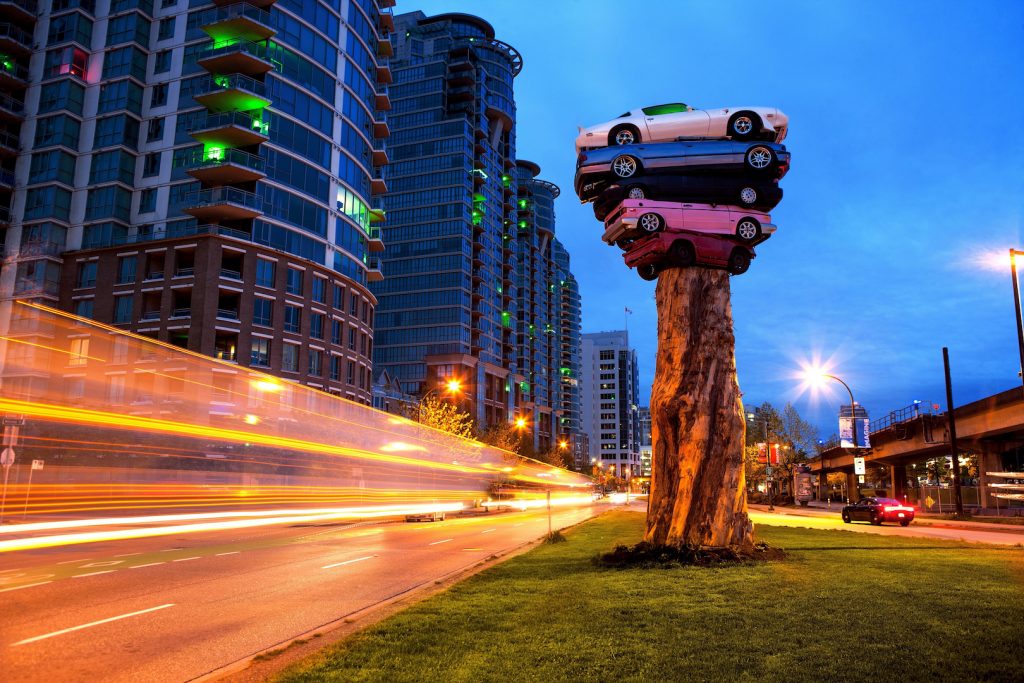From the Capitals and Columns series.
Trans Am Totem was sponsored by the Vancouver Biennale: 2014 Open Borders / Crossroads Vancouver exhibition.
It’s a meditation on Vancouver’s history, it occupied a busy urban traffic median at Quebec Street and Pacific Boulevard (it’s currently being repaired and will be re-sited).
A mere 150 years ago the area was shoreline, tidal flats and pristine old growth forest in proximity to the Squamish village Snawkw. False Creek later became Vancouver’s first industrial zone – ringed by an ever-changing collection of log booms full of old growth trees. Over the years the mills got bigger and the old growth timber gave way to second growth ‘sticks’. During the 1980’s the area transformed into a hub of stadiums, highways, high rise towers, transit corridors.
Trans Am Totem reflects upon the history of the site through references to old growth forest, the Squamish, logging and stacked, manufactured structures.
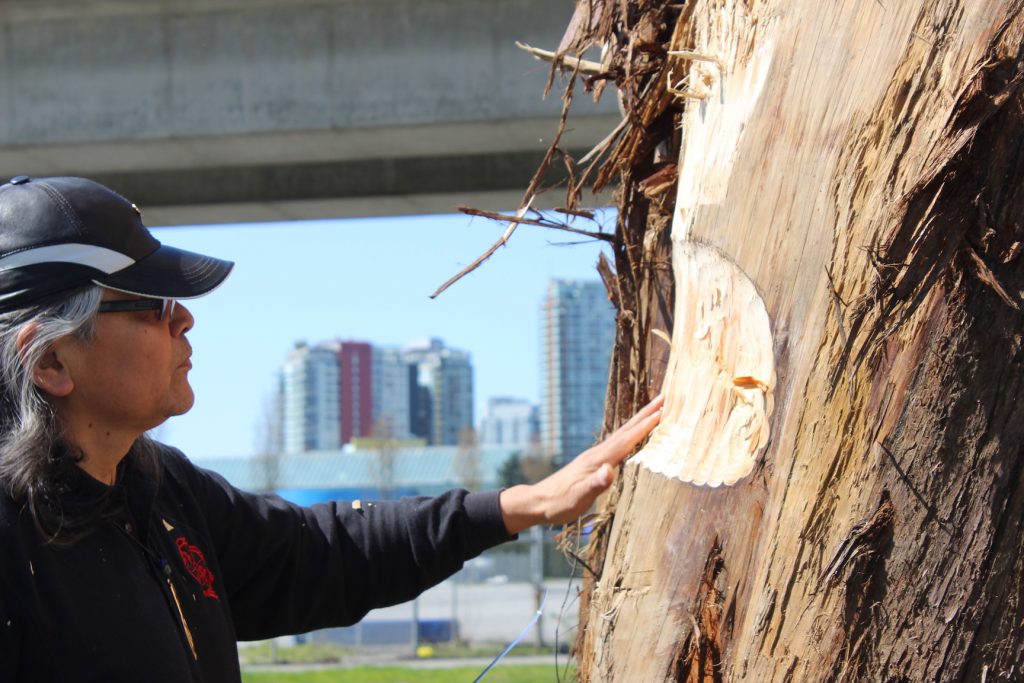
Rick Harry – Xwalacktun – carving a bear paw into the old growth cedar trunk.
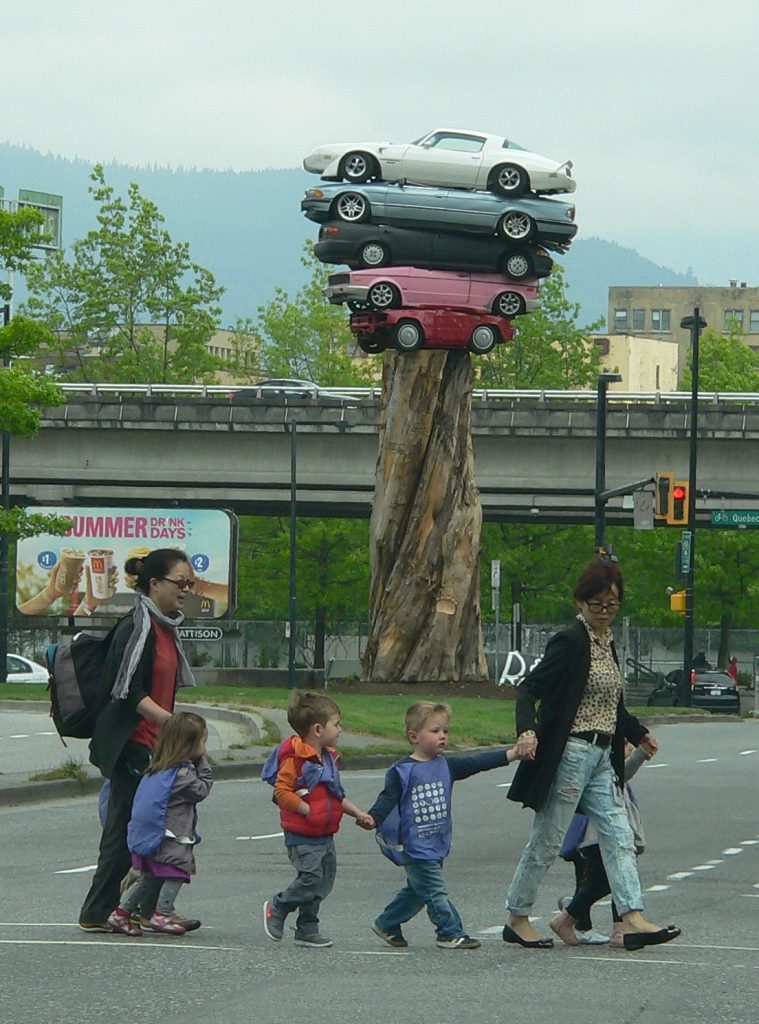
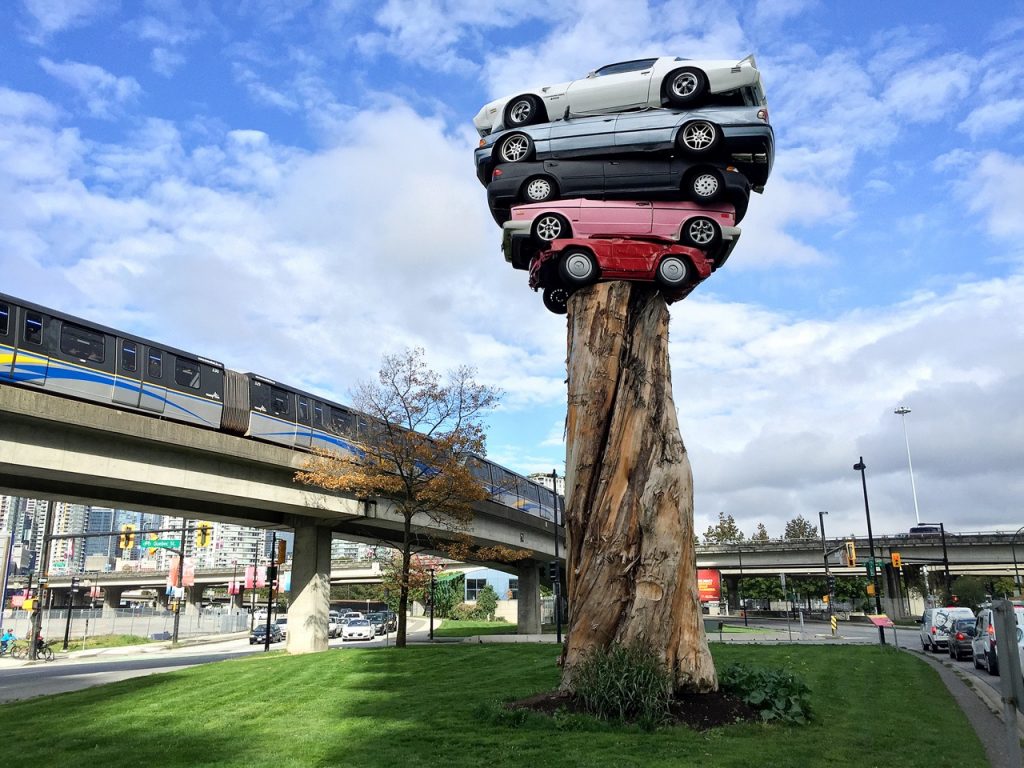
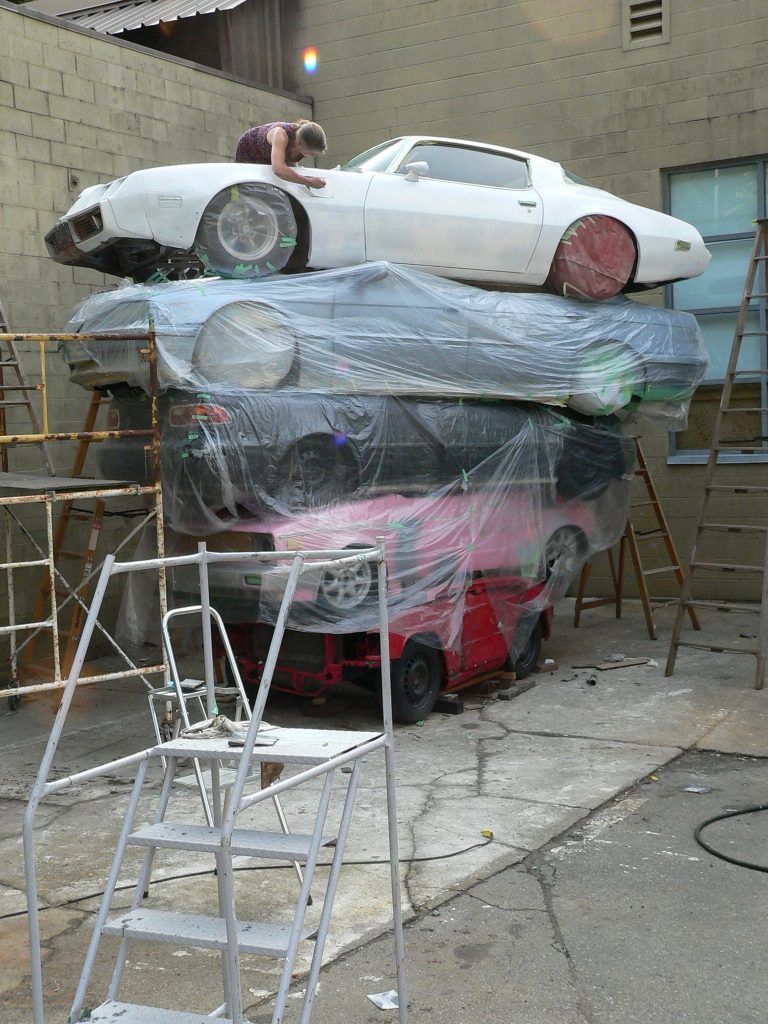
The sculpture was constructed in 2013/14 at Capilano University (where I taught drawing and painting). As fate would have it, the University axed the Studio Art and Textiles Departments that same year. The shocking, illegal* cuts were widely condemned in local and national media. Regardless, administrators proceeded with their “rebranding”. Years later, litigation revealed the dishonest Cap U admin must have had tacit approval from Capilano Faculty Association executives.*
Trans Am Totem was the last sculpture made in the Studio Art Department and can be considered a response to the loss of art and art education at a business obsessed university.
“The sculpture reminds us of our conflicted relationship to nature and technology. The surreal combination of the automobiles stacked on top of a monumental trunk of a cedar tree is an original and uncanny metaphor for the inversion of what we claim to value and what we actually value” – Ian Wallace, 2018
* George Rammell has chronicled these events in ‘The Healing Circle’, George is my colleague who taught sculpture at Cap U.
